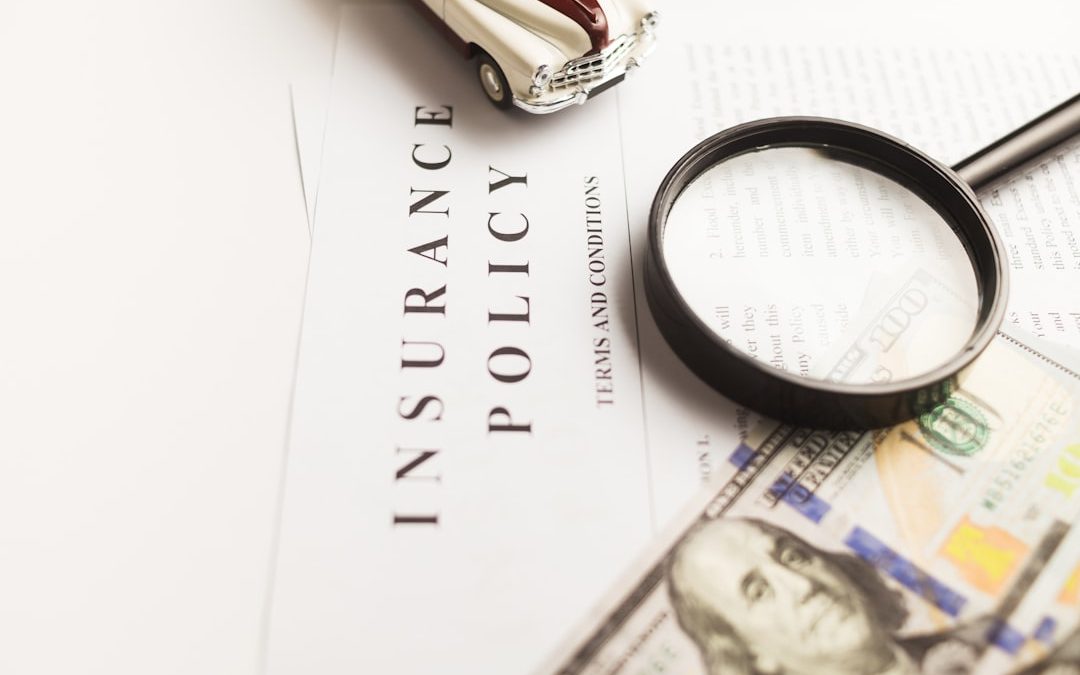When an accident occurs, the immediate aftermath can be overwhelming, not just in terms of physical and emotional stress but also regarding financial implications. One of the most significant consequences of being involved in an accident is the potential increase in your insurance premiums. Insurance companies assess risk based on various factors, and a history of accidents can signal to insurers that you are a higher risk.
This perception can lead to a spike in your premiums, sometimes by as much as 20% or more, depending on the severity of the accident and your previous driving record. For instance, if you were at fault in a collision that resulted in significant property damage or injuries, your insurer may classify you as a higher-risk driver, which can lead to increased costs for coverage. Moreover, the duration of the premium increase can vary.
Typically, an accident can affect your rates for three to five years, depending on the insurance provider and the specifics of your policy. Some states have laws that limit how long an accident can impact your premiums, but in many cases, the financial repercussions can linger long after the incident itself. It’s essential to understand that not all accidents will have the same impact; minor fender benders may not affect your rates as significantly as more serious incidents.
Additionally, if you have a clean driving record prior to the accident, some insurers may offer leniency, but this is not guaranteed. Understanding these dynamics can help you navigate the complexities of insurance premiums post-accident.
Key Takeaways
- Accidents can significantly impact your insurance premiums, so it’s important to understand how they can affect your rates.
- When choosing a repair shop, consider factors such as reputation, certifications, and warranties to ensure quality repairs and maintain the value of your vehicle.
- Good driving habits, such as avoiding speeding and distractions, can help you maintain a clean driving record and lower your insurance premiums.
- Take advantage of discounts and savings offered by insurance companies, such as safe driver discounts or bundling multiple policies.
- Bundling your policies, such as auto and home insurance, can lead to cost savings and simplified management of your insurance coverage.
Tips for Choosing the Right Repair Shop
Seeking Recommendations
One of the first steps in finding a reliable repair shop is to seek recommendations from trusted sources, such as friends, family, or even your insurance agent. Many insurance companies have preferred repair shops that they work with regularly, which can streamline the claims process and ensure that repairs meet specific standards.
Doing Your Research
However, it’s essential to do your own research as well. Reading online reviews and checking ratings from organizations like the Better Business Bureau can provide valuable insights into a shop’s reputation. Another important factor to consider is whether the repair shop offers a warranty on their work. A reputable shop will stand behind their repairs and provide a guarantee for parts and labor.
Additional Factors to Consider
Inquiring about the shop’s experience with your specific make and model of vehicle is also crucial. Some shops specialize in certain brands or types of repairs, which can be beneficial for ensuring that your vehicle is restored to its pre-accident condition. Ultimately, taking the time to choose the right repair shop can save you headaches down the line and ensure that your vehicle is safe and reliable.
The Importance of Good Driving Habits

Good driving habits are not just about safety; they also play a crucial role in maintaining lower insurance premiums over time. Insurers often reward drivers who demonstrate responsible behavior behind the wheel with lower rates.
By cultivating these habits, you not only reduce your risk of accidents but also signal to your insurance provider that you are a low-risk driver, which can lead to more favorable premium rates. Moreover, maintaining good driving habits extends beyond just avoiding accidents; it also involves regular vehicle maintenance and adherence to traffic laws. For example, ensuring that your vehicle is in good working order—such as having functioning brakes and lights—can prevent breakdowns and accidents that could otherwise lead to claims.
Additionally, participating in defensive driving courses can further enhance your skills and may even qualify you for discounts on your insurance premiums. By prioritizing safe driving practices, you create a positive feedback loop: safer driving leads to fewer accidents, which in turn leads to lower insurance costs.
Taking Advantage of Discounts and Savings
| Category | Metrics |
|---|---|
| Discounts | Percentage of discounts used |
| Savings | Total amount saved |
| Deals | Number of deals taken advantage of |
Insurance companies often provide a variety of discounts that policyholders may not be aware of, making it essential to explore all available options to save on premiums. Common discounts include those for safe driving records, multi-car policies, and bundling home and auto insurance. For instance, if you have multiple vehicles insured under one policy or combine your auto insurance with homeowners or renters insurance, you could see significant savings—sometimes up to 25% off your total premium.
Additionally, many insurers offer discounts for completing specific safety courses or for being a member of certain organizations or professions. For example, students with good grades may qualify for discounts aimed at young drivers, while seniors might find savings through programs designed for older adults. It’s also worth asking about loyalty discounts for long-term customers or discounts for low mileage if you don’t drive frequently.
By actively seeking out these opportunities and discussing them with your insurance agent, you can maximize your savings and ensure that you are not overpaying for coverage.
The Benefits of Bundling Your Policies
Bundling insurance policies is a strategy that many consumers overlook but can yield substantial financial benefits. By consolidating multiple types of coverage—such as auto, home, and life insurance—under one provider, policyholders often receive significant discounts on their premiums. Insurance companies reward this practice because it reduces administrative costs and fosters customer loyalty.
For example, bundling auto and homeowners insurance could lead to savings ranging from 10% to 25%, depending on the insurer and specific policies involved. In addition to financial savings, bundling can simplify managing your insurance needs. Having all your policies with one provider means dealing with a single point of contact for claims and inquiries, which can streamline communication and reduce confusion during stressful situations like accidents or property damage.
Furthermore, many insurers offer additional perks for bundled policies, such as enhanced coverage options or added benefits like roadside assistance or identity theft protection. This holistic approach not only saves money but also provides peace of mind knowing that all aspects of your insurance are coordinated under one umbrella.
How Your Credit Score Affects Your Premiums

Your credit score is a critical factor that many people do not realize influences their auto insurance premiums significantly. Insurers often use credit-based insurance scores as part of their risk assessment process; studies have shown that individuals with higher credit scores tend to file fewer claims than those with lower scores. As a result, insurers may charge lower premiums to those with good credit histories because they are perceived as more responsible and less likely to engage in risky behavior.
The correlation between credit scores and insurance premiums varies by state due to regulations governing how insurers can use credit information. In states where it is permissible, having a poor credit score could lead to higher premiums—sometimes by hundreds of dollars annually—while improving your credit score over time can help lower your rates. To mitigate this impact, it’s advisable to monitor your credit regularly and take steps to improve it if necessary.
Paying bills on time, reducing debt levels, and avoiding new credit inquiries can all contribute positively to your credit profile and ultimately help you secure more favorable insurance rates.
The Role of Deductibles in Lowering Premiums
Deductibles play a pivotal role in determining your auto insurance premiums; they represent the amount you agree to pay out-of-pocket before your insurance coverage kicks in during a claim. Generally speaking, higher deductibles lead to lower premiums because they shift more financial responsibility onto the policyholder in the event of an accident or damage claim. For example, opting for a $1,000 deductible instead of a $500 deductible could reduce your premium significantly—sometimes by 10% or more—depending on the specifics of your policy.
However, while choosing a higher deductible can save money on monthly premiums, it’s essential to consider your financial situation and ability to pay that deductible if an accident occurs.
Therefore, it’s crucial to strike a balance between manageable premiums and deductibles that won’t leave you financially strained in case of an incident.
Evaluating your driving habits and financial readiness can help guide this decision effectively.
Reassessing Your Coverage Needs After an Accident
After experiencing an accident, it’s prudent to reassess your coverage needs to ensure that they align with your current circumstances and risk profile. An accident may highlight gaps in your existing coverage or prompt you to consider additional protections that were previously unnecessary. For instance, if you were involved in an accident where liability was an issue, you might want to increase your liability limits to protect yourself from potential lawsuits or claims resulting from future incidents.
Additionally, reviewing whether comprehensive or collision coverage is still appropriate for your vehicle is essential after an accident. If your car has depreciated significantly since you purchased it or if repair costs are high relative to its value, it may be worth considering dropping collision coverage altogether or adjusting deductibles accordingly. This reassessment process allows you not only to tailor your policy more closely to your current needs but also potentially save money by eliminating unnecessary coverage or adjusting limits based on new risk factors identified after the accident.
Engaging with an insurance agent during this process can provide valuable insights into making informed decisions about your coverage moving forward.
FAQs
What factors can affect car insurance premiums after an accident?
Factors that can affect car insurance premiums after an accident include the severity of the accident, the driver’s history of accidents and claims, the type of coverage and deductible chosen, the make and model of the car, and the driver’s age and location.
How can I lower my car insurance premiums after an accident?
To lower car insurance premiums after an accident, you can consider raising your deductible, taking advantage of discounts, improving your credit score, shopping around for quotes, and maintaining a clean driving record.
What are some discounts that can help lower car insurance premiums after an accident?
Some discounts that can help lower car insurance premiums after an accident include safe driver discounts, multi-policy discounts, good student discounts, and discounts for safety features on your car.
How does my driving record affect my car insurance premiums after an accident?
A history of accidents and traffic violations can lead to higher car insurance premiums after an accident, as insurers consider these factors when determining risk and setting rates.
What role does the type of coverage and deductible play in lowering car insurance premiums after an accident?
Choosing a higher deductible and opting for only necessary coverage can help lower car insurance premiums after an accident, as it reduces the insurer’s risk and potential payout.


